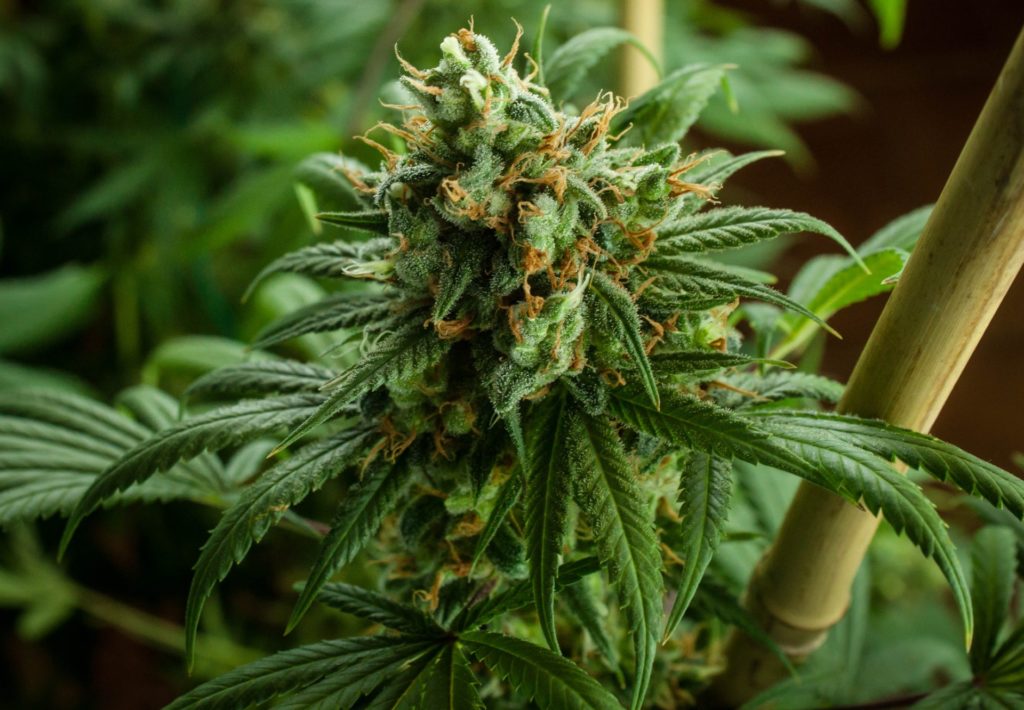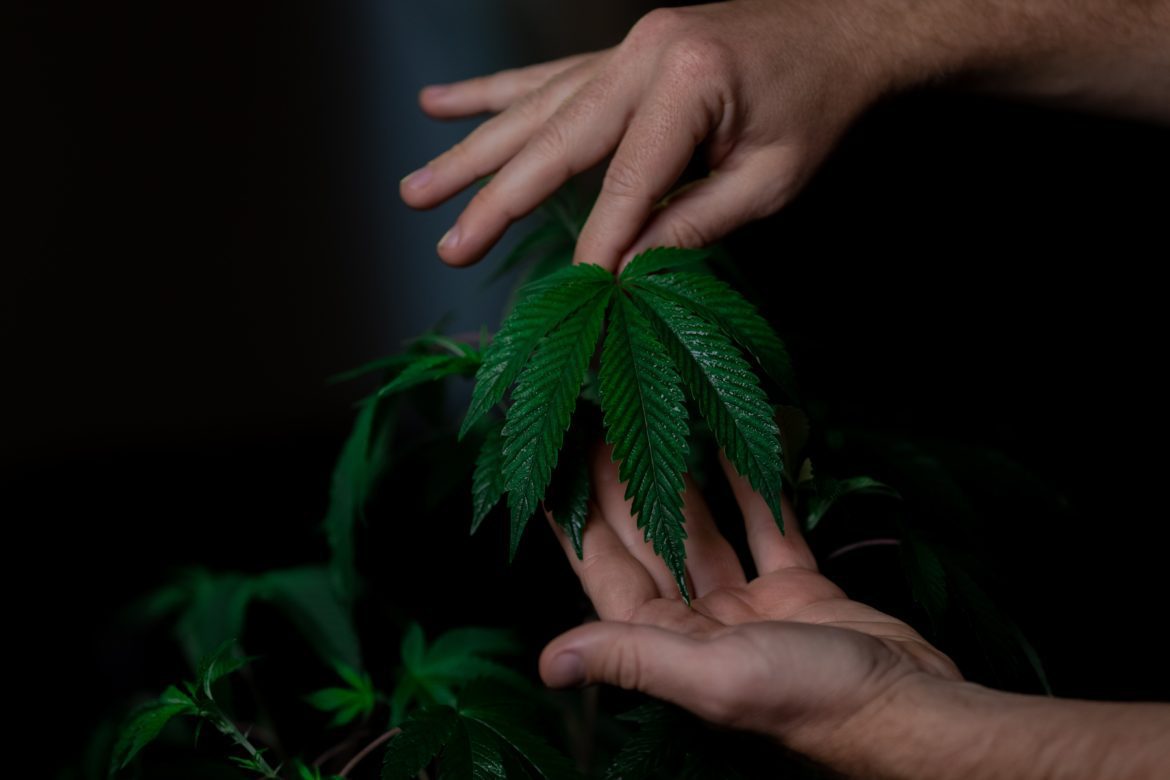Growing cannabis can be hard work, especially if you start your plants from seed. They’re like your botanical children. They’re counting on you to meet all their needs, and you want to see them grow up healthy.
When something doesn’t look quite right, it’s only natural to be concerned. Botanical children, much like human children, require a lot of nutrients to grow properly. Nutrient deficiencies commonly cause illness or death in plants. Your plants can’t tell you when they’re hungry or what they need.
Magnesium is highly important to cannabis plants, and the best way to assure that your plants are getting enough magnesium is to carefully monitor them, regularly assess their growth, and supplement magnesium the moment warning signs begin to appear.
What is magnesium?
Magnesium is a chemical element, and it’s also a vital nutrient. Magnesium occurs naturally, but plants, people, and animals can’t make it on their own. Most living things need it, but we aren’t able to produce it. Sunlight can help us make our own vitamin D to promote calcium absorption, but nothing can help us make our own magnesium.
In people and animals, magnesium is necessary to support the nervous system, repair and sustain muscle, create bone, blood, tissue, and DNA, and manage blood sugar and blood pressure. If you aren’t getting enough magnesium through your diet, it can seriously harm you.
If your plants aren’t getting enough magnesium, it can also seriously harm them. Magnesium is necessary for life.
The importance of magnesium for plants
Plants need chlorophyll. Chlorophyll is what makes them green, but it’s more than just a pigment. It also contains antioxidants and phytonutrients that help the plant to grow, and help your body when you eat them.
Chlorophyll is what helps to convert energy from the sun into energy for the plant.
In order to make chlorophyll, a plant needs a lot of magnesium. If it doesn’t have magnesium, it can’t complete the process of photosynthesis. The plant will shrivel and die.
If magnesium deficiency is caught early, intervention can turn things around. You have to be vigilant. Your plant is talking to you. You just need to understand what it’s saying.
Inspecting your plants for magnesium deficiency
When plants don’t have enough magnesium, they get saggy. They wither and start to curl because the leaves aren’t drawing up any energy from the sun or grow lights. Older leaves will start dropping off. The rest of the leaves will begin to turn yellow or brown as they begin to die from the tip. Signs of death will travel up the leaf, causing discoloration and eventually leading the leaves to drop off.
Magnesium deficiency symptoms often travel upwards from the base of the plant. The lower leaves will succumb first, and the stalk will lose its green color. The presence of chlorophyll is what turns the plant green. If your stalk or lower leaves look white or very pale, they aren’t making enough chlorophyll. This will become a problem that destroys your plant all the way up to the top.
Another way to determine magnesium deficiency is to check your leaves for a burnt appearance. If the leaves have enough magnesium, they’re able to convert sunlight into energy. If they don’t, the leaves will simply cook. They go all grown and crispy, usually starting with the tip of the leaves.

Factors that impact magnesium absorption
If your plants aren’t getting enough magnesium, they’re going to have problems using magnesium. That’s usually the case. In some situations, your plants may be getting enough magnesium, but other factors prevent the plant from utilizing the magnesium.
In these cases, the soil pH is usually to blame. Almost all cannabinoids are acid-based. They start in the plant as THCA, CBDA, CBCA, and CBGA. The “a” in every case stands for acid. Your plant needs mildly acidic soil in order to thrive. Typically, a soil pH of anywhere between 6 and 7 sets the perfect stage.
Get a pH testing kit for your soil and rule out pH problems. If your pH is too high or too low, most garden stores sell kits to help you adjust the soil pH. They’re relatively inexpensive drops that you can mix into your soil. Follow the instructions and be sparing. It’s better to slowly make adjustments than it is to overcompensate and ruin your soil. Adjust up or down and check again in a day or so. Keep checking for a few days to monitor the pH. When it reaches the ideal range, your problems with a magnesium deficiency will likely be over. If they don’t resolve or if the soil pH is already where it needs to be, you’ll have to supplement your plants with more magnesium.
Giving your cannabis plants magnesium
The easiest way to give your cannabis plants magnesium is to mix some Epsom salt into the water. Epsom salt is magnesium sulfate, which is exactly what your plants need. You can get several pounds of Epsom salt from any store that has a pharmacy section.
Choose unmedicated, fragrance-free Epsom salt to avoid introducing contaminants into the soil. Lavender might smell nice, but it won’t do anything to promote the health of your plant. Your plant also doesn’t have sore feet or muscle aches. Stick with the pure varieties.
Start with 1 teaspoon of Epsom salt per gallon of water. Shake it up to mix it, and use the solution to water with. When you’re out of that batch, make each successive batch ¼ teaspoon less until you stop supplementing magnesium.
One teaspoon seems like it wouldn’t be enough to do much, but your plant is going to be extremely efficient at processing magnesium. It doesn’t need a wealth of it — it only needs a little bit. Don’t get overzealous with the Epsom salt. You risk harming your plant further, rather than nursing it back to health.
If you don’t have Epsom salt, you can also use garden lime according to the package instructions. Just keep in mind that garden lime can lower the pH of your soil. If you’re dialed in where your plants need to be, monitor the pH after you add garden lime. You may need to adjust to compensate.
When will results be noticeable?
Your plant is really eager to get that magnesium, and it will start using it as soon as the roots find it. They won’t perk right back up and shoot up 20 feet taller like Harry Potter herbology, but you’ll see results quickly. Your plants may begin to look better within a day and will continue to look better with time.
The leaves that were significantly damaged may already be goners. This is especially true for the leaves closest to the bottom of the plant. Look at the newer leaves and check for new growth. They’re a better indicator of how the plant is doing with its current level of magnesium.
Magnesium deficiency is easy to prevent
The only thing better than fixing magnesium deficiency is preventing it from ever becoming a problem. If you use soil specifically formulated for growing cannabis and supplement with cannabis-specific nutrients when appropriate, you’ll probably never encounter magnesium deficiency in your plants.
You should be checking your plants on a daily basis to assure they’re growing the way they’re supposed to. If you’re concerned with something, keeping an eye on it for a few days will allow you to determine whether or not it’s a problem that should be addressed for the health of the plant.
The internet is overflowing with expert-level cannabis growing tips. If something seems a little off with your plant, all you need to do is Google it. You’ll probably be able to find a picture of a plant that looks the same way yours does, as well as detailed instructions about how to fix the problem. Be proactive.
The takeaway
Magnesium deficiency can kill your cannabis plants. It’s both easy to treat and easy to avoid. Avoiding it is the best option. If you’re already noticing signs of magnesium deficiency, it’s time to pick up a soil testing kit and some Epsom salt. The sooner you act, the lesser the damage to your plant will ultimately be.
If you need some bud while your plant is healing, Emjay has you covered. We have a wide selection of flower, and we can deliver it in as little as half an hour. Toke up now while you’re waiting for your homegrown weed to come to fruition.
